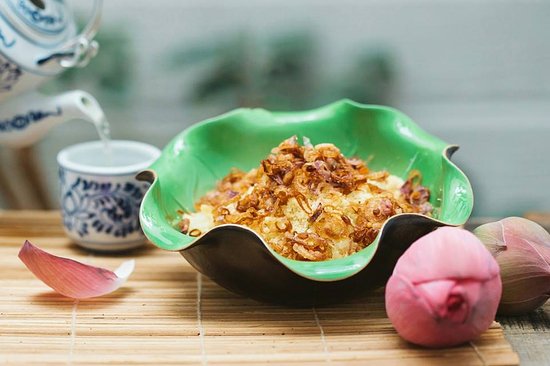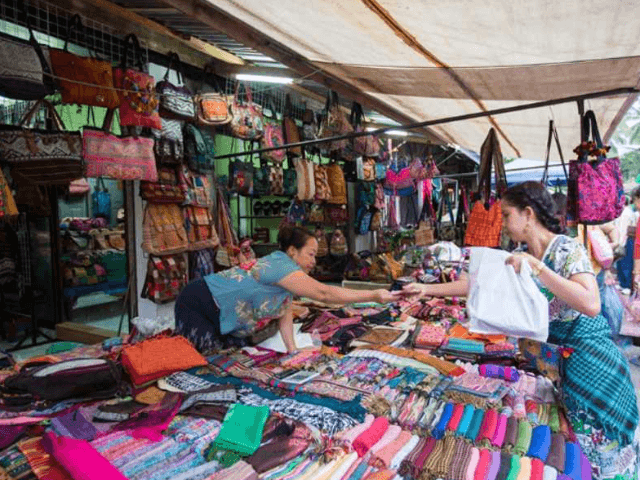Dining in Vietnam is like a joyful adventure from tastes to manners on the table. Having a good command of Vietnamese dinning etiquette is primer to knowing about the country’s culture
TABLE OF CONTENTS
1
1. Meals and daily food in Vietnam family
2
2. Restaurant etiquette in Vietnam
3
3. Dinning invitation by the local
• How to decide the seat
• Hold your posture properly
4
• How to use the eating utensils
Dining in Vietnam is like a joyful adventure from tastes to manners on the table. Having a good command of Vietnamese dinning etiquette is primer to knowing about the country’s culture

Vietnam dinning etiquette feature
1. Meals and daily food in Vietnam family
Vietnamese commonly have 3 main meals a day including breakfast, lunch and dinner.
What to eat for breakfast is diverse. Most travelers have known about ‘banh mi’ – a famous kind of Vietnamese street food can be served as breakfast at a very low price. But Vietnam cuisine is not limited to that. There are always immense options for breakfast: kinds of “bún” (round-string noodle) like “bún chả” – bún with grilled pork and fish sauce, “bún đậu” – bún with fried tofu, “bún xốt vang” – bún with red wine beef stew; “xôi” (sticky rice with peanut, beans or fried onion as topping); “bánh cuốn” – rice crepes with pork and sometimes egg; “bánh giò” – steamed rice flour stuffed with milled pork and mushroom; porridge with ribs, fish or even snails…

Vietnam breakfast: Sticky rice with ground bean
Because Vietnamese are the early birds that often get up from 5 in the morning and have breakfast before 9, restaurants and food stores often open early and serve until quite late.
Although people prefer a quick lunch to get back to their work after taking break, there is a wide range of foods for a nutritious lunch which can be grabbed anywhere on the street. Vietnamese cuisine focuses on the balance so vegetables, spice herbs are often used beside meat to better the taste. Unlike Western food, Vietnamese food use less sugar and more salt.
Dinner is the main meal where family gathers to prepare for dishes and talk to each other while eating. Normally, dinner food consists of from 1 to 3 main dishes made of meat, fish or any other food rich in protein and calories. Side dishes are often vegetables, soup or pottage. Rice is a part that is indispensable in a Vietnamese daily meal.
Until recently Vietnamese begin to build the habits of eating out. Most people decide to eat out instead of eating at home due to the lack of time. It is breakfast that people have at food stalls the most.
2. Restaurant etiquette in Vietnam
.jpg)
Some dining etiquette can be applied worldwide but the others varies from country to country. In case you may get into awkward and unexpected situations, here are some of table etiquettes that are useful on dinning out in Vietnam.
• Unlike Western countries, in Vietnam, you can place your elbows on the table without worrying about being judged impolite.
• It is not something surprising if men get served before women, it is a part of the culture influenced by Confucius.
• Always pass with both hands.
• Feel free to ask for fork and spoon if your feel like your chopstick skills are not good.
• Do not be afraid to hold your bowl up to your mouth
• Make sure to try every food displayed and do not eat meat only.
• It may be considered rude if you refuse any food or drink offered. Kindly inform other diners that you are full before being offered the next one.
• Finish all the food on your plate before obtaining more.
• Take your time if you are with friends.
3. Dinning invitation by the local

Vietnamese are the friendliest residents of all countries in the world, they may invite you to dine right after a fun amusing chat. However, keep in mind that Vietnam is a country that belongs to the Sinosphere (the East Asian cultural sphere) well-known for having plenty of rules adjusting people’s behavior. That is why Vietnamese attach much importance to behavior especially the table etiquette.
• Arriving at the place
When being invited to someone’s house, if you arrive when the hosts are busy preparing for the meal, you are supposed to offer to help. Gifts are highly appreciated.
• How to decide the seat
The sitting order is also arranged by the age of people presenting. The oldest one or the one who is considered to have the highest position according to the kinship takes their seat first then the others orderly. Your seat is subject to the hosts’ arrangement so you are not to sit if the hosts have not invite you to.
Vietnamese respect the elderly and they always wait for the oldest to start the meal before anyone pick up their chopsticks and begin to eat.
• Hold your posture properly
During the meal, you must keep yourself in proper posture. If you sit on a chair at a dining table, hold your back straight and if you sit on a mat, you should move your arms and your back but your lower body. Make sure to pay attention to your arms also. Your elbows should neither rest on the table nor be put under the table, just kindly place your wrist on the edge of the table, that is consider an act of well-educated people.
• How to use the eating utensils
Many Asian countries use the same eating utensil set but how to use each item is quite different. For example, in South Korean, you have to pick up the food from your bowl without lifting it off the table while in Vietnam, this can be considered impolite. Vietnamese suppose the gesture of holding the bowl with your hands while eating is an act of respectful attitude. However, holding both your bowl and your chopsticks in one hand is not elegant. Besides, you should not lick or bite your chopsticks or place them directly on the surface of the table for sanitary purpose. Also, the ladle after being used must be return to the big bowl upside down.
Vietnamese traditionally have a different dining process from other countries, especially Western countries. However it is unlikely that foreigners are expected to be familiar with every cultural custom. Just keep your mind open to Vietnam etiquette and enjoy your trip. Hope you have pretty memories exploring Vietnam.
Read more:
- List of Vietnam tour packages
- Five dishes you must try when in Hanoi
- A Vegetarian Guide to Your Vietnam Travel
- Best places for Halal Food in Vietnam and Cambodia Tour
- Top must-try Foods in Myanmar










